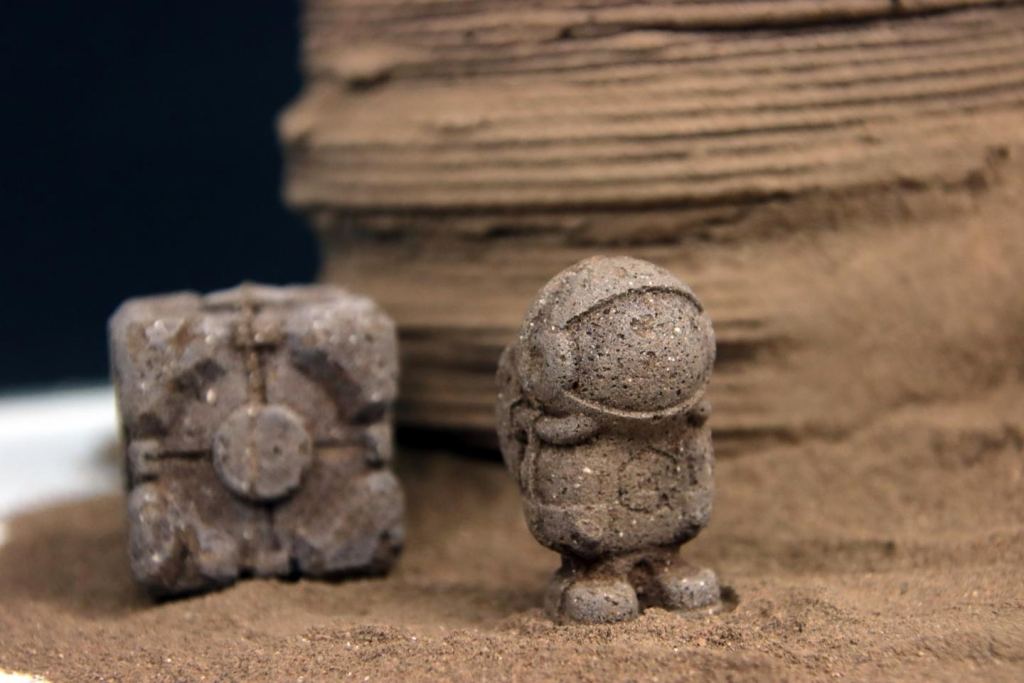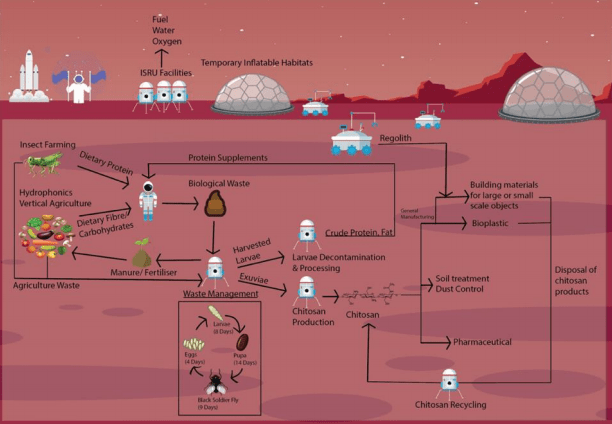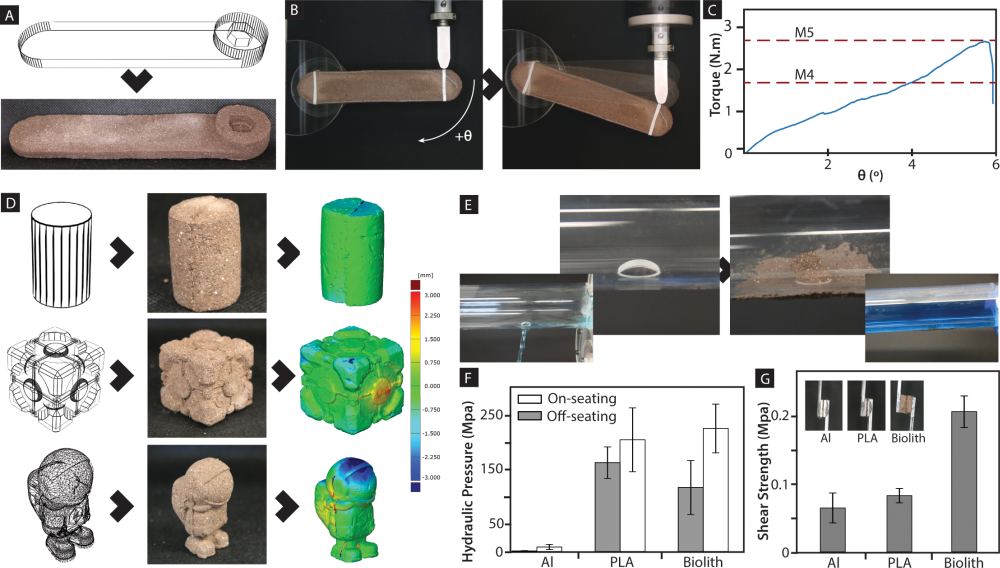It’s hard to deny that we’re heading for a future with a human presence on Mars. But to develop sustained presence, there are an enormous number of technical problems to be worked out. One of those problems concerns manufacturing and building.
We can’t send everything people will need to Mars. We’ll need some way to build structures, and tools and other things.
A new study says we could use chitin for building material. Chitin is well-known as the material that arthropod exoskeletons are made of, though it’s also present in many other lifefroms, and is a major component in the cell walls of fungi. The study says that chitin could be used for buildings and for tools.
The title of the new research is “Martian biolith: A bioinspired regolith composite for closed-loop extraterrestrial manufacturing.” The lead author is Javier Fernandez, of the Singapore University of Technology and Design. The paper is published in the journal PLOS One.
Chitin is a common polymer here on Earth. According to a press release announcing this new research, chitin is “… produced and metabolized by organisms across most biological kingdoms.” The fact that it’s so widespread means it solves a problem, or problems, well. “Due to its ubiquity,” the release says, “chitin will likely be part of any artificial ecosystem.”
The idea behind the new study was to produce chitin with simple chemistry and minimal energy. The first step was to sort of “reverse engineer” chitin itself. By taking chitin shells from shrimp or other creatures and treating it with something alkaline, you get what’s called chitosan. Then the chitosan is combined with an analog of Martian soil. That new chitinous material is called biolith, and it’s very useful.
For their study, the authors used the material to make a wrench, a tiny Martian, and a model of a Martian habitat.

According to the authors, their work shows that chitin can be used to build tools as well as rigid structures out of available materials, using minimal energy, something that will be necessary for humanity to ever have an interplanetary presence.
This is all part of the understanding that in-situ resource extraction and manufacturing is necessary in space exploration. For a sustained human presence anywhere in the Solar System other than Earth, it’s simply impossible to carry everything we need by blasting it into space with enormous rockets.
In this study, they point out that ISRU (In-Situ Resource Utilization) facilites could already be in place on Mars prior to the arrival of settlers. So engineers and specialists would first visit the surface to build these facilities. Among other things, the biolith could be used to build rigid protective structures around inflatable habitats.
This technology was actually developed to solve problems here on Earth, by creating circular systems in urban settings. “The technology was originally developed to create circular ecosystems in urban environments, but due to its efficiency, it is also the most efficient and scalable method to produce materials in a closed artificial ecosystem in the extremely scarce environment of a lifeless planet or satellite,” said Fernandez.

“Against the general perception, bioinspired manufacturing and sustainable materials are not a substituting technology for synthetic polymers, but an enabling technology defining a new paradigm in manufacturing, and allowing to do things that are unachievable by the synthetic counterparts,” lead author Fernandez says in the press release. “Here we have demonstrated that they are key not only for our sustainability on Earth but also for one of the next biggest achievements of humanity: our transformation into an interplanetary species.”
One of the benefits of this biolith is its flexibility. It can be used in a variety of manufacturing methods that don’t put the material under elevated pressures and temperatures. The authors write in their paper that “The versatility of biolith in applications without elevated temperature or pressure is demonstrated in an unprecedented range of manufacturing methods, such as casting, using it as mortar and in additive manufacturing.”

Different thinkers have often pointed to biomimicry as a potential solution for spacefaring problems. The idea is that over vast geological time scales, nature has produced some well-adapted systems, materials, and structures. Chitin is an example of one of them.
Just as different life forms used these systems to exploit other niches in the biosphere, humans can use them to do the same. And by adapting chitin for use on another planet, we might be putting evolution into overdrive.

